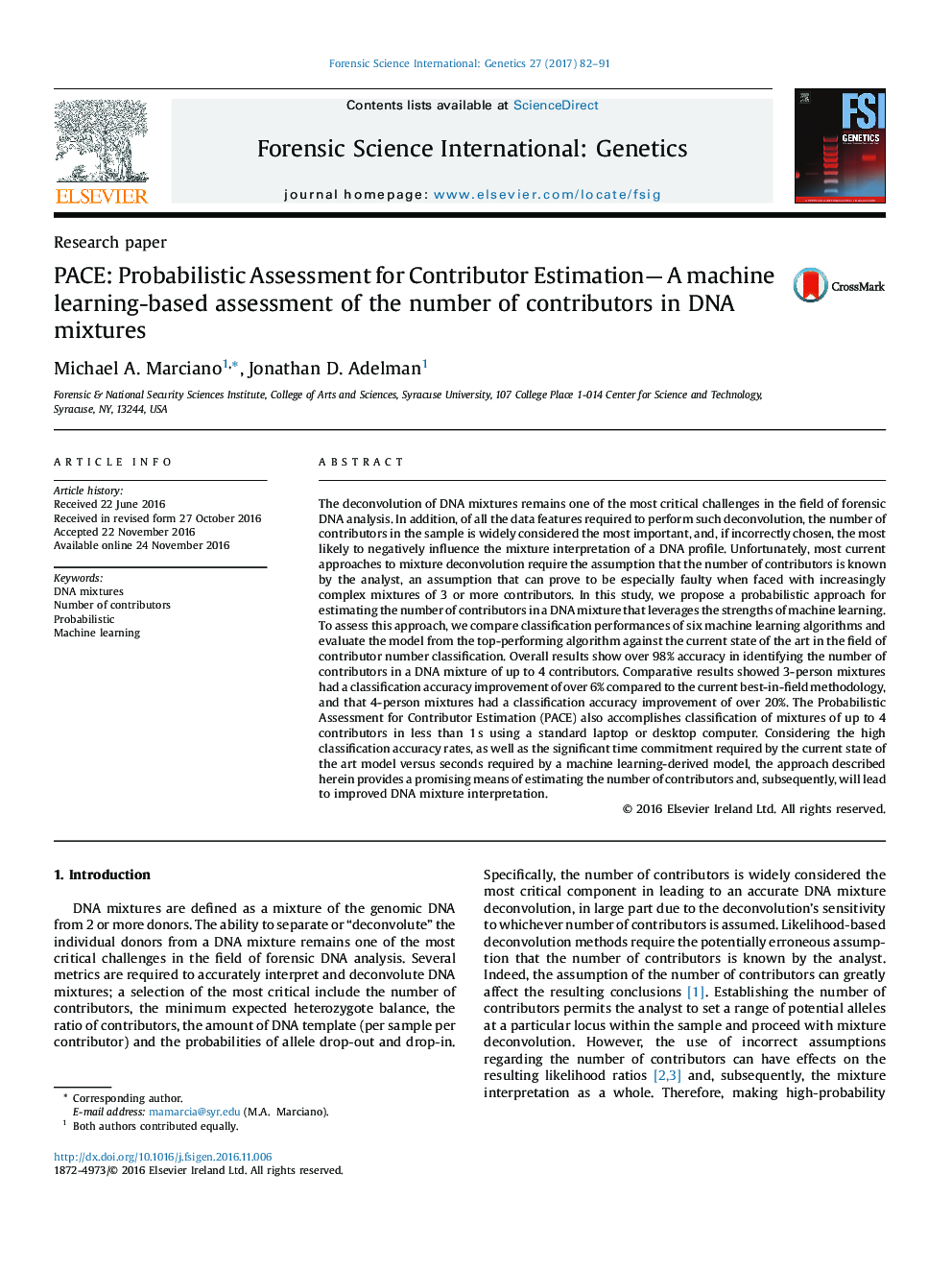| Article ID | Journal | Published Year | Pages | File Type |
|---|---|---|---|---|
| 6462913 | Forensic Science International: Genetics | 2017 | 10 Pages |
â¢The introduction of a new and powerful technique to estimate the number of contributors in a DNA mixture and convey the results probabilistically.â¢The use of machine learning permits high accuracy while maintaining low computational expense (e.g., standard computer/processor) and high speed, less than 1 s per sample of up to 4 contributors.â¢The technique can be applied to any amplification chemistry given the availability of properly sized data sets.
The deconvolution of DNA mixtures remains one of the most critical challenges in the field of forensic DNA analysis. In addition, of all the data features required to perform such deconvolution, the number of contributors in the sample is widely considered the most important, and, if incorrectly chosen, the most likely to negatively influence the mixture interpretation of a DNA profile. Unfortunately, most current approaches to mixture deconvolution require the assumption that the number of contributors is known by the analyst, an assumption that can prove to be especially faulty when faced with increasingly complex mixtures of 3 or more contributors. In this study, we propose a probabilistic approach for estimating the number of contributors in a DNA mixture that leverages the strengths of machine learning. To assess this approach, we compare classification performances of six machine learning algorithms and evaluate the model from the top-performing algorithm against the current state of the art in the field of contributor number classification. Overall results show over 98% accuracy in identifying the number of contributors in a DNA mixture of up to 4 contributors. Comparative results showed 3-person mixtures had a classification accuracy improvement of over 6% compared to the current best-in-field methodology, and that 4-person mixtures had a classification accuracy improvement of over 20%. The Probabilistic Assessment for Contributor Estimation (PACE) also accomplishes classification of mixtures of up to 4 contributors in less than 1Â s using a standard laptop or desktop computer. Considering the high classification accuracy rates, as well as the significant time commitment required by the current state of the art model versus seconds required by a machine learning-derived model, the approach described herein provides a promising means of estimating the number of contributors and, subsequently, will lead to improved DNA mixture interpretation.
